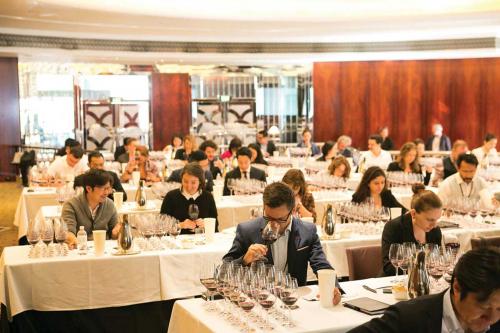For most of my time associated with the wine industry, I used descriptive sensory analysis in our research on wine and in teaching. Descriptive sensory analysis requires a team of tasters to agree on a set of words (descriptors) that characterise the wine. Complete analysis requires descriptors for appearance, nose and palate.
Many descriptors are specific to wine variety, and it is essential that the tasting panel agree on what the terms mean. This quite often requires experience and training over time to develop skills in identifying terms. It is also possible to set up standards for aroma and taste descriptors to further aid tasting panel training. Tasting needs proper facilities with no external distractions. The optimum is a set of sensory booths with conditions including wall colour, air conditioning and lighting that cannot influence the taster’s impression. A detailed description of the requirements, at least in the European context, can be found at bit.ly/3q1XJrN.
Descriptive sensory analysis is time consuming and expensive. It is more common in research laboratories or large corporate wineries. A detailed descriptive sensory analysis is particularly useful when assessing the impact of different viticultural or winemaking practices on the sensory profile of the finished wine. This approach does not always reflect the response of consumers or wine professionals such as sommeliers. It does not reflect cultural differences in wine appreciation, an important issue with changing international markets. This has led to the development of other sensory methodologies, such as Rate-All-That-Apply (RATA) and Pivot© Profile (PP).
The RATA method is based on the CATA (Check-All-That-Apply) procedure, which seeks to engage consumers in a sensory evaluation process that assesses what they like or dislike about a wine style, in essence reversing the top-down procedure of winemakers indicating to consumers what attributes a wine may have. The CATA method can be performed in an open setting or in sensory booths with large numbers of participants. Tasters are provided with a checklist of terms and asked simply to check those that apply.
CATA has its limitations with discriminating products with subtle differences, and this is where RATA comes in. RATA uses a checklist of descriptors, and participants also need to provide a quality rating for each attribute. While traditional sensory analysts were somewhat sceptical about the ability of RATA to differentiate wines, recent comparative studies have pointed to the success of RATA as an accurate and rapid sensory strategy with a clear consumer focus. Lukas Danner and others from the University of Adelaide (Am. J. Enol. Vitic. 2018, vol. 69, pp. 12–21) established a methodology for comparing descriptive sensory analysis with RATA. Eleven trained panellists followed the descriptive sensory analysis route while 84 consumers (red wine) and 71 consumers (white wine) used the RATA approach. Multiple-factor analysis demonstrated marked similarities between the methods in discriminating the samples.
PP is generating considerable interest and excitement. The method is a free descriptive one, whereby panellists compare wines against the pivot wine, but use comparative terms such as ‘more astringent’ or ‘less sweet’. For wine, PP was first applied to Champagne in 2015 (Food Qual. Prefer. vol. 42, pp. 66–77) and has recently been used in an assessment of super-premium Shiraz from different Australian wine regions by research staff of the Australian Wine Research Institute (AWRI) and the National Wine and Grape Industry Centre (NWGIC) (Food Qual. Prefer. 2020, vol. 83, 103858). Dr Wes Pearson (AWRI) sees one advantage of PP in eliminating the ‘subconscious bias of winemakers’. Winemakers often get caught in thinking about why a wine has a particular colour or aroma that tends to create an impression of what the sensory characteristics should be. Wes further argues that the advantage of PP for winemakers and sommeliers is that it ‘plays to the strengths’ of these wine professionals as they are making comparisons and already have an expansive vocabulary (bit.ly/31sglXJ).
To test the relevance of the PP method, a tasting was carried out with international sommeliers in May 2017 at the Somms of the World event in Sydney (see photo from Wine Australia). A similar event was also held during Vinexpo Hong Kong. The advantage of the comparative PP method was that it allowed the sommeliers to obtain a detailed understanding of the characteristics of Shiraz across Australian wine regions. This in turn benefits the Australian industry because it gives sommeliers and other wine professionals the confidence to explain the wine to their customers.
Considerable success is now being achieved with the PP approach. Choosing the pivot is also a critical issue. Dr John Blackman (NWGIC) has found that in a tasting with more than 100 participants using different pivots, the wines were still separated into the same basic groups. John indicates that the best option is to select a pivot that is fairly central to the wines being studied as this gives a better spread of wines around the pivot. Expect more exciting work to come.



